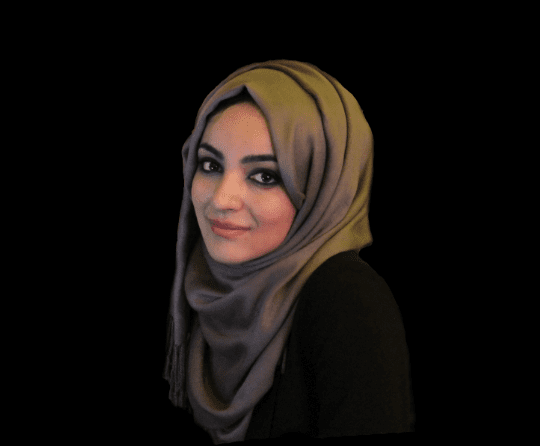Dating back to the 5th Millennium BC, the Erbil Citadel sits atop a large archaeological mound in the heart of Erbil, the capital of the Kurdish Autonomous Region in Iraq (also known as Iraqi Kurdistan). The mound is comprised of multiple layers of past generations building on top of crumbling structures erected by earlier communities over thousands of years.
![An aerial view of the citadel [Wikipedia]](https://i0.wp.com/www.middleeastmonitor.com/wp-content/uploads/2016/09/20160925-ErbilCitadel-5.jpg?resize=1200%2C800&ssl=1)
An aerial view of the citadel [Wikipedia]
The Citadel’s most notable feature is its exterior wall encompassing the little Citadel town within the vibrant city of Erbil, brilliantly juxtaposing the old and the new. This architectural gem displays a ring of approximately 100 tall 19th-century house façades built against each other, giving the town its fortified look. At its base, you are met with a large bazaar and an elaborate fountain as you approach the entrance to the Citadel. Within it, a maze of narrow alleyways branch out of the main Grand Gate leading to the town, which is occupied by traditional courtyard houses that preserve the design of the historic town.
![Street View Below Citadel - Erbil, Iraq [Flickr / Adam Jones]](https://i0.wp.com/www.middleeastmonitor.com/wp-content/uploads/2016/09/20160925-ErbilCitadel-4.jpg?resize=1200%2C800&ssl=1)
Street View Below Citadel – Erbil, Iraq [Flickr / Adam Jones]
![A view of the citadel [Flickr/ministeriebz]](https://i0.wp.com/www.middleeastmonitor.com/wp-content/uploads/2016/09/20160925-ErbilCitadel-14.jpg?resize=1200%2C800&ssl=1)
A view of the citadel [Flickr/ministeriebz]
Undergoing Sumerian, Assyrian, Sassanid, Mongol, Christian as well as Ottoman rule, the Citadel has been inhabited by numerous religions and ethnicities making it home to various religious, residential and other educational and civil structures. Today, the Mulla Afandi Mosque is the only religious structure that is still standing within the Citadel.
![[Flickr / Jan Sefti]](https://i0.wp.com/www.middleeastmonitor.com/wp-content/uploads/2016/09/8.png?resize=300%2C333&ssl=1)
[Flickr / Jan Sefti]
It is perhaps this rich history and embodiment of generations of human settlement and experience that gives the Citadel its unique character. With just a few footsteps, you can step thousands of years back into the very early beginnings of urbanisation in Mesopotamia. In 2014, the Citadel was inscribed on the World Heritage List, citing that “the Citadel is today one of the most dramatic and visually exciting cultural sites not only in the Middle East but also in the world.”
![View of the stairs near the castle (Qalat) of Erbil/ Iraq. [Flickr / Mustafa Khayat]](https://i0.wp.com/www.middleeastmonitor.com/wp-content/uploads/2016/09/20160925-ErbilCitadel-12.jpg?resize=1200%2C800&ssl=1)
View of the stairs near the castle (Qalat) of Erbil/ Iraq. [Flickr / Mustafa Khayat]
The Citadel is also the oldest continually inhabited place in the world, as acknowledged by UNESCO. In the most recent census in 1995, the Citadel was home to 1,631 people. 840 families were evicted from its grounds in 2007 and it was closed down for renovations and restoration work. Only one family was allowed to continue living in the Citadel in order to ensure there would be no break in the continuous habitation of over 7,000 years. After $13 million was spent on its restoration, the site is now open to the public.
![A view of the citadel [Flickr / lachicaphoto]](https://i0.wp.com/www.middleeastmonitor.com/wp-content/uploads/2016/09/20160925-ErbilCitadel-2.jpg?resize=1200%2C800&ssl=1)
A view of the citadel [Flickr / lachicaphoto]
![20160925-erbilcitadel-1 Erbil Citadel [Flickr / Martijn.Munneke]](https://i0.wp.com/www.middleeastmonitor.com/wp-content/uploads/2016/09/20160925-ErbilCitadel-1.jpg?w=277&h=208&ssl=1)
Erbil Citadel [Flickr / Martijn.Munneke]
![20160925-erbilcitadel-9 Erbil Citadel [Flickr / Jeffrey Beall]](https://i0.wp.com/www.middleeastmonitor.com/wp-content/uploads/2016/09/20160925-ErbilCitadel-9.jpg?w=772&h=208&ssl=1)
Erbil Citadel [Flickr / Jeffrey Beall]
![20160925-erbilcitadel-10 Night walk around the citadel [Flickr / Mustafa Khayat]](https://i0.wp.com/www.middleeastmonitor.com/wp-content/uploads/2016/09/20160925-ErbilCitadel-10.jpg?w=139&h=208&ssl=1)
Night walk around the citadel [Flickr / Mustafa Khayat]
![20160925-erbilcitadel-3 Museum in Erbil Citadel [Flickr / David Stanley]](https://i0.wp.com/www.middleeastmonitor.com/wp-content/uploads/2016/09/20160925-ErbilCitadel-3.jpg?w=765&h=574&ssl=1)
Museum in Erbil Citadel [Flickr / David Stanley]
![20160925-erbilcitadel-6 Erbil Citadel [Flickr / Mustafa Khayat]](https://i0.wp.com/www.middleeastmonitor.com/wp-content/uploads/2016/09/20160925-ErbilCitadel-6.jpg?w=427&h=285&ssl=1)
Erbil Citadel [Flickr / Mustafa Khayat]
![20160925-erbilcitadel-7 Citadel of Arbil [Flickr / William John Gauthier]](https://i0.wp.com/www.middleeastmonitor.com/wp-content/uploads/2016/09/20160925-ErbilCitadel-7.jpg?w=427&h=285&ssl=1)
Citadel of Arbil [Flickr / William John Gauthier]
![20160925-erbilcitadel-8 Erbil Hawler Citadel inside [Flickr / Jan Sefti]](https://i0.wp.com/www.middleeastmonitor.com/wp-content/uploads/2016/09/20160925-ErbilCitadel-8.jpg?w=1196&h=797&ssl=1)
Erbil Hawler Citadel inside [Flickr / Jan Sefti]
![An aerial view of the citadel [Wikipedia]](https://i0.wp.com/www.middleeastmonitor.com/wp-content/uploads/2016/09/20160925-ErbilCitadel-5.jpg?resize=1200%2C800&ssl=1)
![Street View Below Citadel - Erbil, Iraq [Flickr / Adam Jones]](https://i0.wp.com/www.middleeastmonitor.com/wp-content/uploads/2016/09/20160925-ErbilCitadel-4.jpg?resize=1200%2C800&ssl=1)
![A view of the citadel [Flickr/ministeriebz]](https://i0.wp.com/www.middleeastmonitor.com/wp-content/uploads/2016/09/20160925-ErbilCitadel-14.jpg?resize=1200%2C800&ssl=1)
![[Flickr / Jan Sefti]](https://i0.wp.com/www.middleeastmonitor.com/wp-content/uploads/2016/09/8.png?resize=300%2C333&ssl=1)
![View of the stairs near the castle (Qalat) of Erbil/ Iraq. [Flickr / Mustafa Khayat]](https://i0.wp.com/www.middleeastmonitor.com/wp-content/uploads/2016/09/20160925-ErbilCitadel-12.jpg?resize=1200%2C800&ssl=1)
![A view of the citadel [Flickr / lachicaphoto]](https://i0.wp.com/www.middleeastmonitor.com/wp-content/uploads/2016/09/20160925-ErbilCitadel-2.jpg?resize=1200%2C800&ssl=1)



![20160925-erbilcitadel-1 Erbil Citadel [Flickr / Martijn.Munneke]](https://i0.wp.com/www.middleeastmonitor.com/wp-content/uploads/2016/09/20160925-ErbilCitadel-1.jpg?w=277&h=208&ssl=1)
![20160925-erbilcitadel-9 Erbil Citadel [Flickr / Jeffrey Beall]](https://i0.wp.com/www.middleeastmonitor.com/wp-content/uploads/2016/09/20160925-ErbilCitadel-9.jpg?w=772&h=208&ssl=1)
![20160925-erbilcitadel-10 Night walk around the citadel [Flickr / Mustafa Khayat]](https://i0.wp.com/www.middleeastmonitor.com/wp-content/uploads/2016/09/20160925-ErbilCitadel-10.jpg?w=139&h=208&ssl=1)
![20160925-erbilcitadel-3 Museum in Erbil Citadel [Flickr / David Stanley]](https://i0.wp.com/www.middleeastmonitor.com/wp-content/uploads/2016/09/20160925-ErbilCitadel-3.jpg?w=765&h=574&ssl=1)
![20160925-erbilcitadel-6 Erbil Citadel [Flickr / Mustafa Khayat]](https://i0.wp.com/www.middleeastmonitor.com/wp-content/uploads/2016/09/20160925-ErbilCitadel-6.jpg?w=427&h=285&ssl=1)
![20160925-erbilcitadel-7 Citadel of Arbil [Flickr / William John Gauthier]](https://i0.wp.com/www.middleeastmonitor.com/wp-content/uploads/2016/09/20160925-ErbilCitadel-7.jpg?w=427&h=285&ssl=1)
![20160925-erbilcitadel-8 Erbil Hawler Citadel inside [Flickr / Jan Sefti]](https://i0.wp.com/www.middleeastmonitor.com/wp-content/uploads/2016/09/20160925-ErbilCitadel-8.jpg?w=1196&h=797&ssl=1)








